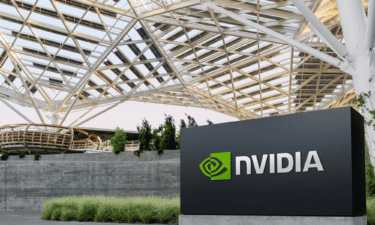How many stocks do you think trade on the S&P/TSX Composite Index that have a market cap higher than $1 billion and a P/E of fewer than 7.5 times trailing 12-month earnings?
Well, using one of the three or four stock screeners available for Canadian stocks (they’re all pretty bad), I came up with a list of 18 companies. Take out the P/E ratio requirement and the list grows to 204.
So, about 10% of the stocks with a market cap of $1 billion or higher, make the grade.
The stock with the highest market cap is Fairfax Financial at $17.6 billion; the lowest is Interfor, a maker of lumber products for home construction at $1.03 billion.
Care to guess which stock isn’t on the list but should be?
The answer is Cymbria Corporation (TSX:CYB), an investment company I’ve recommended several times in the past, most recently at the end of November.
If you take Cymbria’s net income for the first nine months of fiscal 2018 and the last quarter of fiscal 2017, you get trailing 12-month net income of $181 million. Divide that into its current market cap of $1.2 billion, and you get a P/E ratio of 6.6, well within the parameters I’d set for my screening criteria.
That’s the danger of using stock screeners exclusively. You miss out and great opportunities like the one provided by the investment managers at EdgePoint Wealth Management, the people behind Cymbria.
Do-it-yourself investment specialist Robin Speziale talks about the role of stock screeners in his search for great stocks in his 2018 book, Capital Compounders.
“Stock screeners still play a role in my discovery process, especially to focus on metrics like market cap (<= $100M), revenue growth, cash flow yields, etc.,” Speziale writes. “However, I cannot stress enough that DIY investors should scour all companies on SEDAR, as screeners might miss some stocks.”
Like Cymbria.
Read its quarterly commentaries and reports
To be the best at anything in life you’ve got to be continually learning. Investing is no different. If you get a chance, take the time to read Cymbria’s commentaries and reports. They’re very illuminating.
For example, Cymbria’s current investment portfolio consists of 45 equities and a 20.7% ownership interest in EdgePoint Wealth Management, the investment management firm behind Cymbria; Edgepoint has grown its assets under management over the past five years from $2.6 billion to $18.7 billion, primarily from increasing the number of investment advisors that use its products.
Over those five years, its revenues and profits kept going up, with Cymbria shareholders getting one-fifth of the profits and a significant source of recurring revenue.
Look more deeply into its report, and you’ll see that most of its top 15 positions are stocks outside Canada — a damning statement about the quality of opportunities on the TSX, but that’s a subject for another day.
Stocks EdgePoint likes
Although most of EdgePoint’s its most significant holdings are U.S. or international stocks, it did pick up a big chunk of AutoCanada (TSX:ACQ) in the third quarter ended September 30.
“The overarching thesis is that we believe the industry could benefit from a professionally run conglomerate rolling up the Mom and Pop dealerships which are having trouble finding buyers. AutoCanada should be able to run them efficiently and earn good returns on capital,” EdgePoint wrotes in the Q3 2018 report. “Recently new management has taken over, who we believe is very much aligned with us. Insiders have purchased over $7 million in stock since the new management team took over.”
That’s great news if you’re an owner of AutoCanada stock. I have recommended it over the past year with terrible results to date, but if there’s one thing I know about EdgePoint, they’re willing to be patient investors.
Another TSX value stock it likes is PrairieSky Royalty (TSX:PSK), a company that provides capital to oil and gas exploration companies in return for ongoing royalties. Oil prices will have to pick up before EdgePoint benefits from its investment.
The bottom line on Cymbria stock
Over the past month, Cymbria’s lost almost 9% of its value. It now trades at a 19% premium to its net asset value. Historically, it’s traded as high as a 34% premium to NAV.
As I said in November, CYB is a steal at $50.







